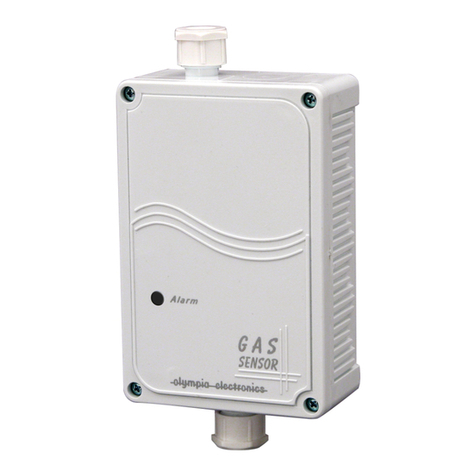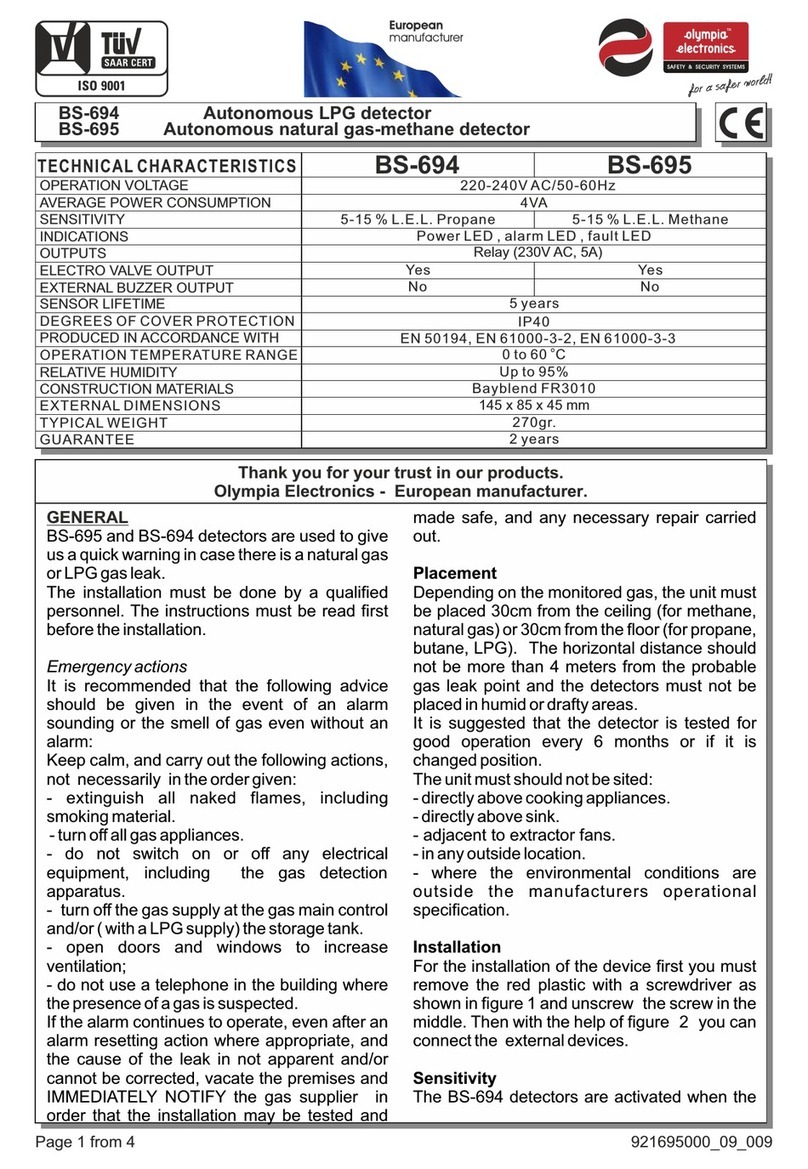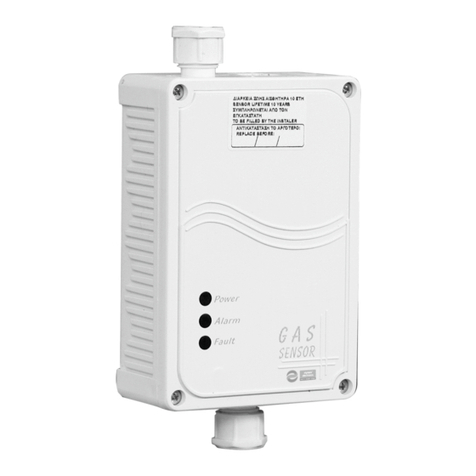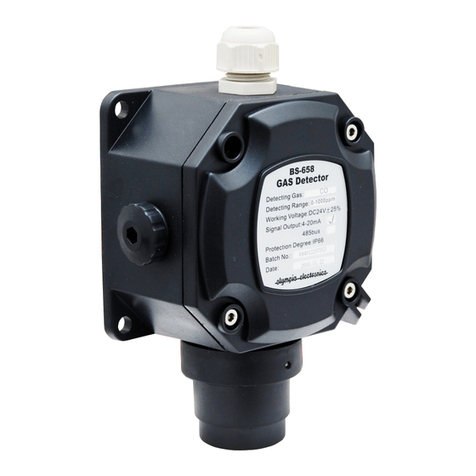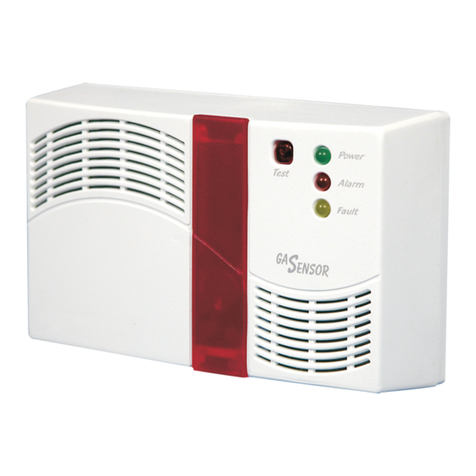
-It is suggested to conduct the calibration
test at least once every 12 months.
-During the calibration procedure, conduct
a clean air calibration and then a reference
gas calibration.
To calibrate the device, remove the 4 retaining
screws (figure 1) in order to gain access to the
interior.
Clean air calibration
Take the following steps:
1.Ensure that the environment is clean and
does not contain explosive gases.
2.Select using the switches S1 and S2 (figure
3) the special function «Clean air calibration»
3. Press the button BT2 (figure 3) for more
t h a n 3 s e c o n d s u n t i l t h e 3 s y s t e m
LEDs(green,red and yellow) start to blink with
a one second rate.
4.Wait 4 seconds until the procedure is
completed. This step may last 60 seconds
more in some instances.
When the procedure is finished, the yellow
led and the buzzer operate intermittently.
(intermittent brief activation every second).
At this point there are two instances:
-The green led is lit. This means that the
clean air calibration has finished with success.
Press and hold the button ΒΤ2 for more than 1
second to exit calibration mode and to return
the detector to normal operation.
-The red led is lit. The clean air calibration
procedure did not finish successfully. Press
and hold the button BT2 for more than 1
second to exit calibration mode and to return
to normal operation. You can repeat the
process by following the steps from the
beginning.
Calibration using a reference gas
The steps for calibrating using a reference gas
are the following:
1. Ensure that the environment is clean an free
from explosive gases.
2.Remove the gland with the filter located on
the sensor head (figure 1).
3. In its position install the accessory OL-11-1
of the calibration kit OL-11 (figure 6).
4. Install the part OL-11-2 on the part OL-11-1
(figure 6).
5. Select via the micro-switch S4 (figure 3) the
concentration of the reference calibration gas
that will be used (20% or 50% L.E.L.).
6. Select via the micro-switches S1 and S2
(figure 3) the special operation «Calibration
with a reference gas».
7. Press and hold the button BT2 (figure 3) for
more than 3 seconds until the 3 system LEDs
(gr e en , r ed a nd ye ll o w) st art to bl ink
(intermittent blink once a second) and then
release the button.
8. Open the steady pressure valve (0.3L /
minute) of the reference gas canister.
9. Wait 3 minutes until the procedure finishes.
This step may last 60 seconds more in
some instances.
Wh i l e w a i ti n g fo r t h e p r o c e d u re t o
complete you can cancel it at any time by
pressing the Bt2 button for more than 3
seconds.
When the procedure is finished, the yellow led
operate intermittently (intermittent brief
activation every second). At this point
close the flow valve on the gas canister.
At this point there are two instances:
-The green led is lit. This means that the
reference gas calibration procedure has
finished with success. Press and hold the
button ΒΤ2 for more than 1 second to exit
calibration mode and to return the detector to
normal operation.
-The red led is lit. The reference gas
c a l i b r a t i o n p r o c e d u r e d i d n o t f i n i s h
successfully. Press and hold the button BT2
for more than 1 second to exit calibration
mode and to return to normal operation. You
can repeat the process by following the steps
from the beginning.
After the calibration procedure is finished and
before normal operation remove the part OL-
11-2, unscrew the part OL-11-1 and reinstall
the gland with filter to the sensor head.
Page 6 from 7
Gas
Canister
Detector
Adapter
OL-11-1
Outlet
port
Figure 6
OL-11-2
Inlet
port
921375000_09_007





